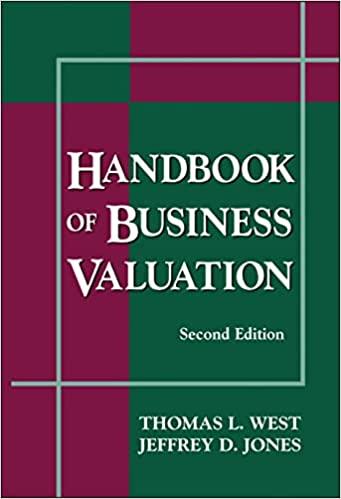Answered step by step
Verified Expert Solution
Question
1 Approved Answer
When a privately owned company decides to distribute its shares to the general public, it goes through a process known as an initial public offering
When a privately owned company decides to distribute its
shares to the general public, it goes through a process known
as an initial public offering IPO There are a number of
advantages to having a firm's shares traded in the public equity
market, including the following:
New capital is raised. When the firm sells its shares to the
public, it acquires new capital that can be invested in the firm.
The firm's owners gain liquidity of their share holdings.
Publicly traded shares are more easily bought and sold, so the
owners can more easily liquidate all or part of their invest
ment in the firm.
The firm gains future access to the public capital market.
Once a firm has raised capital in the public markets, it is easier
to go back a second and third time.
Being a publicly traded firm can benefit the firm's
business. Public firms tend to enjoy a higher profile than
their privately held counterparts. This may make it easier to
make sales and attract vendors to supply goods and services
to the firm.
However, all is not rosy at a publicly held firm. There are a
number of potential disadvantages, including the following:
Reporting requirements can be onerous. Publicly held
firms are required to file periodic reports with the Securities
and Exchange Commission SEC This requirement is not
only onerous in terms of the time and effort required but
also some business owners feel they must reveal information
to their competitors that could be potentially damaging.
The private equity investors now must share any new
wealth with the new public investors. Once the firm is
a publicly held company, the new shareholders share on an
equal footing with the company founders the good and
bad fortune of the firm.
The private equity investors lose a degree of control
over the organization. Outsiders gain voting control over
the firm to the extent that they own its shares.
An IPO is expensive. A typical firm may spend to per
cent of the money raised on expenses directly connected to
the IPO. This cost is increased further if we consider the cost
of lost management time and disruption of business associ
ated with the IPO process.
Exit of the company's owners is usually limited The
company's founders may want to sell their shares through
the IPO, but this is not allowed for an extended period of
time following the IPO. Therefore, this is not usually a good
mechanism for cashing out the company founders.
Everyone involved faces legal liability. The IPO partici
pants are jointly and severally liable for each others' actions.
This means that they can be sued for any omissions from the
IPO's prospectus should the market valuation fall below the
IPO offering price.
Carefully weighing the financial consequences of each of
these advantages and disadvantages can provide a compa
nys owners and managers with some basis for answering
the question of whether they want to become a public
corporation.

Step by Step Solution
There are 3 Steps involved in it
Step: 1

Get Instant Access to Expert-Tailored Solutions
See step-by-step solutions with expert insights and AI powered tools for academic success
Step: 2

Step: 3

Ace Your Homework with AI
Get the answers you need in no time with our AI-driven, step-by-step assistance
Get Started


